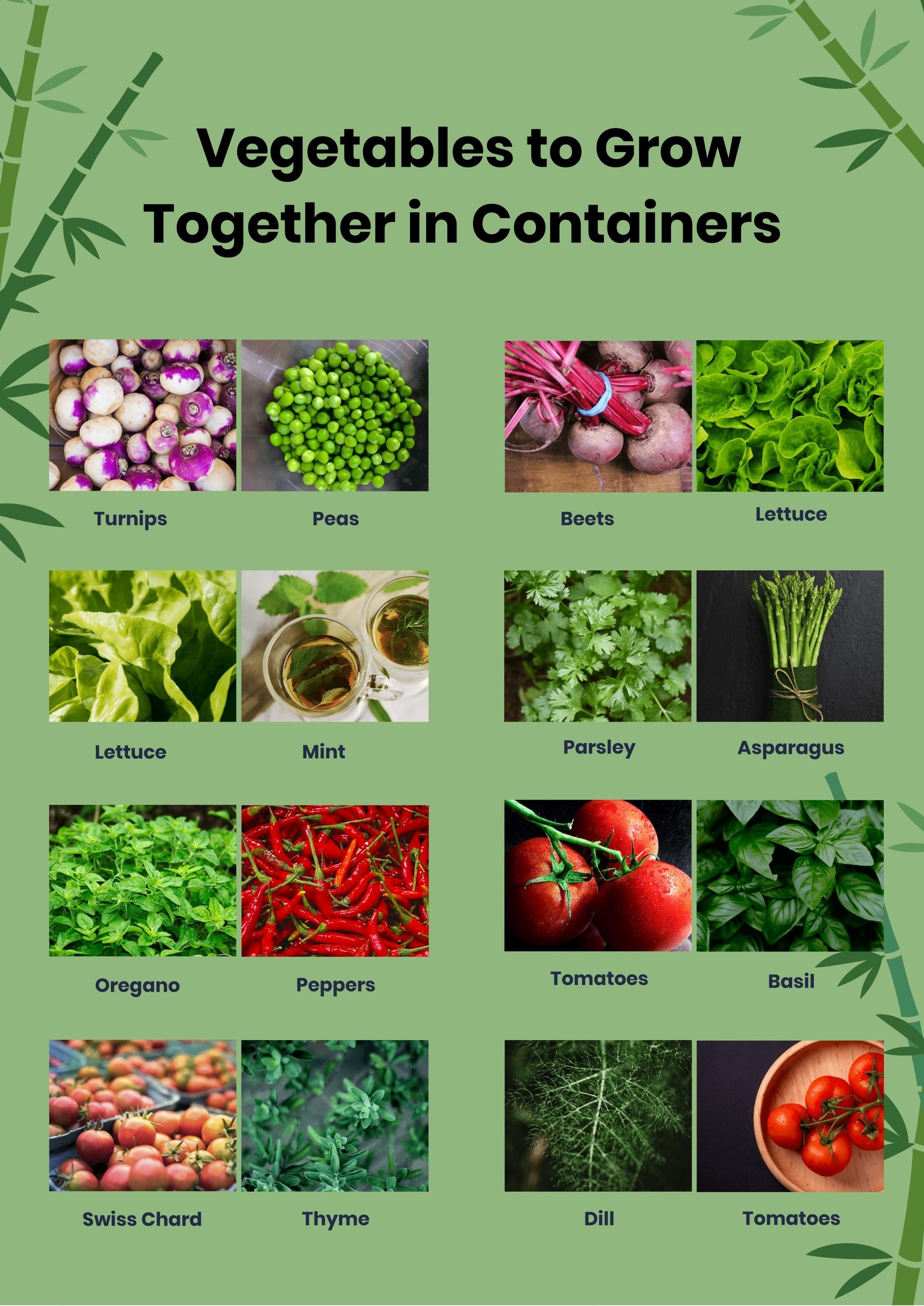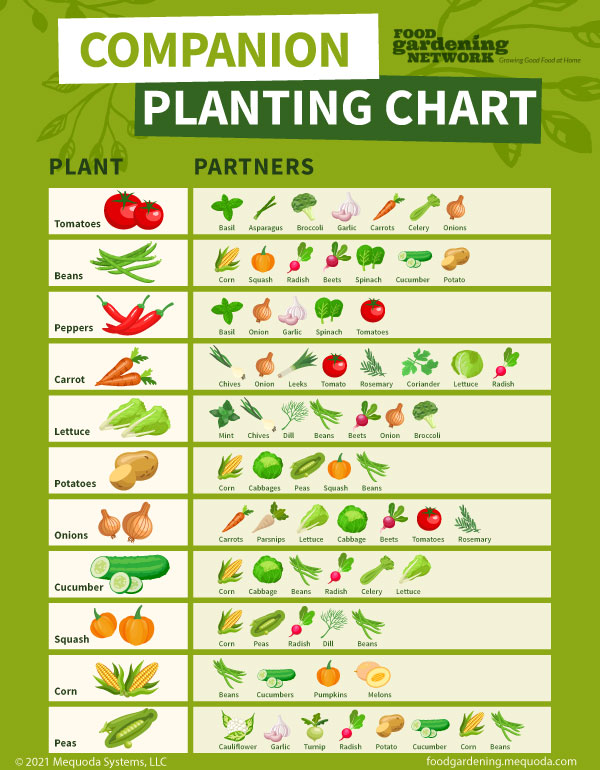Grow A Healthy And Productive Container Garden With Companion Planting
Grow a Healthy and Productive Container Garden with Companion Planting
If you're short on space but still want to grow your own food, container gardening is a great option. With a little planning, you can create a thriving container garden that will provide you with fresh produce all season long.
One of the best ways to improve the health and productivity of your container garden is to use companion planting. Companion planting is the practice of planting certain plants together to benefit each other. There are many different benefits to companion planting, including:
- Increased pollination
- Reduced pest and disease problems
- Improved soil health
- Enhanced flavor
In this blog post, we'll discuss the basics of companion planting and share some of our favorite companion plant pairings. We'll also provide tips for creating a successful container garden using companion planting.
What is Companion Planting?
Companion planting is the practice of planting certain plants together to benefit each other. There are many different ways to companion plant, but the basic idea is to plant plants that have complementary needs and benefits.
For example, some plants attract beneficial insects, while others repel pests. Some plants improve the soil, while others provide shade or support. By planting these plants together, you can create a garden that is more productive and pest-resistant.
Benefits of Companion Planting
There are many benefits to companion planting, including:
- Increased pollination: Some plants attract beneficial insects, such as bees and butterflies. These insects help to pollinate your plants, which leads to a better harvest.
- Reduced pest and disease problems: Some plants repel pests, while others attract beneficial insects that prey on pests. This can help to keep your garden pest-free.
- Improved soil health: Some plants improve the soil by adding nutrients or breaking down organic matter. This can help to improve the health of your plants and make them more resistant to pests and diseases.
- Enhanced flavor: Some plants enhance the flavor of other plants. For example, planting basil near tomatoes can improve the flavor of the tomatoes.
How to Companion Plant
There are many different ways to companion plant. You can use a companion planting chart, or you can experiment and find plant pairings that work well in your garden.
Here are a few tips for companion planting:
- Consider the needs of your plants. Some plants need full sun, while others prefer partial shade. Some plants need well-drained soil, while others prefer moist soil. When choosing companion plants, make sure that their needs are compatible.
- Plant plants that attract beneficial insects. Beneficial insects, such as bees, butterflies, and ladybugs, help to pollinate your plants and control pests. Planting plants that attract these insects can help to keep your garden healthy and pest-free.
- Plant plants that repel pests. Some plants have strong scents that repel pests. For example, planting marigolds near tomatoes can help to repel nematodes.
- Plant plants that improve the soil. Some plants add nutrients to the soil or break down organic matter. These plants can help to improve the health of your soil and make it more productive.
Creating a Successful Container Garden with Companion Planting
If you're planning to create a container garden using companion planting, there are a few things you'll need to do:
- Choose the right containers. The size and type of container you choose will depend on the size of your plants and the amount of space you have.
- Use the right potting mix. Use a potting mix that is specifically designed for containers. This will help to ensure that your plants have the nutrients they need.
- Plant the right plants together. Use a companion planting chart or experiment to find plant pairings that work well in your garden.
- Water and fertilize regularly. Container gardens need to be watered and fertilized more often than gardens in the ground.
- Protect your plants from pests and diseases. Monitor your plants for pests and diseases, and take steps to control them if necessary.
Conclusion
Companion planting is a great way to improve the health and productivity of your container garden. By planting certain plants together, you can create a garden that is more productive, pest-resistant, and flavorful.
If you're new to companion planting, start by using a companion planting chart. This will give you some ideas of which plants work well together. Once you've gotten the hang of it, you can experiment and find plant pairings that work well in your garden.
With a little planning, you can create a thriving container garden that will provide you with fresh produce all season long.
Are you looking for a way to create a beautiful and thriving container garden? If so, you'll want to check out the Gardenia Inspiration container companion planting chart. This chart provides a comprehensive list of plants that can be successfully grown together in containers.
The chart is organized by plant family, so you can easily find plants that will complement each other. It also includes information about the sun exposure, water needs, and growth habits of each plant.
In addition to the chart, the website also provides helpful articles on container gardening. These articles cover topics such as choosing the right containers, selecting the right plants, and caring for your container garden.
So if you're ready to start planning your container garden, be sure to visit Gardenia Inspiration. With the help of this chart and the website's other resources, you'll be well on your way to creating a beautiful and bountiful garden.
FAQ of container companion planting chart
- What is a container companion planting chart?
A container companion planting chart is a guide that shows which plants grow well together in containers. It can help you to choose plants that will benefit each other, deter pests, and improve the overall health of your container garden.
- Why should I use a container companion planting chart?
There are several reasons why you should use a container companion planting chart. First, it can help you to save space in your garden. By planting compatible plants together, you can create a more efficient use of your containers. Second, companion planting can help to deter pests and diseases. Some plants release chemicals that repel pests, while others attract beneficial insects that help to control pests. Third, companion planting can improve the overall health of your plants. By planting plants that complement each other, you can create a more balanced and healthy ecosystem in your container garden.
- How do I use a container companion planting chart?
To use a container companion planting chart, simply look up the plants that you want to grow. The chart will show you which plants are compatible with each other. You can then plant these plants together in the same container.
- Where can I find a container companion planting chart?
There are many resources available online and in libraries that can help you to find a container companion planting chart. You can also purchase a chart from a gardening retailer.
- What are some examples of good companion plants for containers?
Here are some examples of good companion plants for containers:
- Beans and peas: These plants fix nitrogen in the soil, which can benefit other plants.
- Carrots and onions: These plants repel each other's pests.
- Cucumbers and tomatoes: These plants grow well together and can help to deter pests.
- Herbs: Many herbs can be grown together in containers.
- Lettuce and spinach: These plants grow well together and can be harvested quickly.
Image of container companion planting chart
- Image 1: This image shows a colorful chart that lists different vegetables and herbs that can be planted together in containers. The chart also indicates which plants attract beneficial insects and which plants repel pests.

- Image 2: This image shows a more detailed chart that lists specific companion planting combinations for different types of vegetables. The chart also includes information about the benefits of companion planting, such as increased yields and improved pest control.

- Image 3: This image shows a simple chart that lists a few of the most popular companion plants for tomatoes. The chart also includes a few tips for planting tomatoes with companion plants.

- Image 4: This image shows a chart that lists different flowers and herbs that can be planted together in containers. The chart also indicates which plants attract pollinators and which plants repel pests.

- Image 5: This image shows a chart that lists different fruits and vegetables that can be planted together in containers. The chart also includes information about the benefits of companion planting, such as increased yields and improved pest control.

Post a Comment for "Grow A Healthy And Productive Container Garden With Companion Planting"